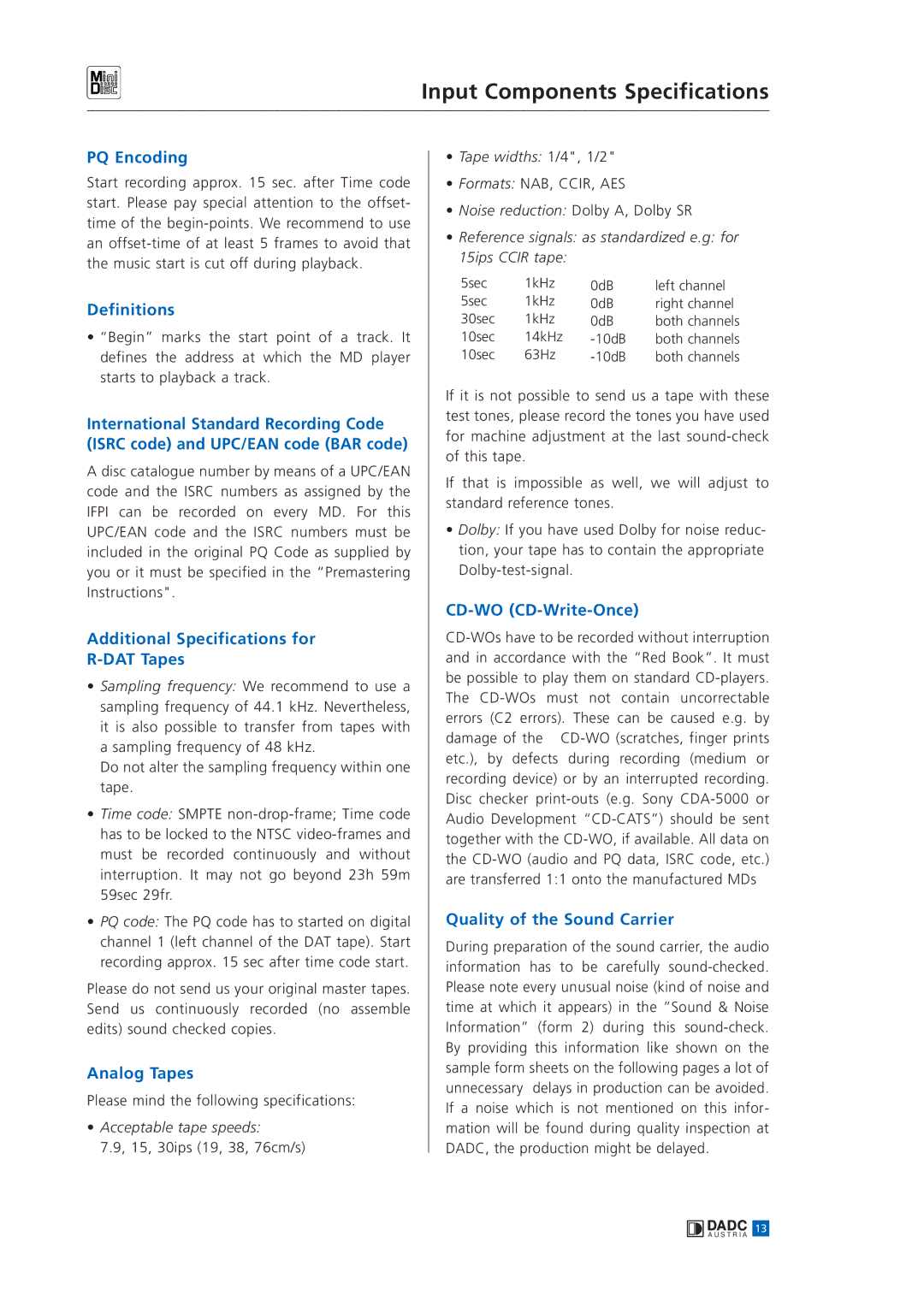
Input Components Specifications
PQ Encoding
Start recording approx. 15 sec. after Time code start. Please pay special attention to the offset- time of the
Definitions
•“Begin” marks the start point of a track. It defines the address at which the MD player starts to playback a track.
International Standard Recording Code (ISRC code) and UPC/EAN code (BAR code)
A disc catalogue number by means of a UPC/EAN code and the ISRC numbers as assigned by the IFPI can be recorded on every MD. For this UPC/EAN code and the ISRC numbers must be included in the original PQ Code as supplied by you or it must be specified in the “Premastering Instructions".
Additional Specifications for
R-DAT Tapes
•Sampling frequency: We recommend to use a sampling frequency of 44.1 kHz. Nevertheless, it is also possible to transfer from tapes with a sampling frequency of 48 kHz.
Do not alter the sampling frequency within one tape.
•Time code: SMPTE
•PQ code: The PQ code has to started on digital channel 1 (left channel of the DAT tape). Start recording approx. 15 sec after time code start.
Please do not send us your original master tapes. Send us continuously recorded (no assemble edits) sound checked copies.
Analog Tapes
Please mind the following specifications:
•Acceptable tape speeds:
7.9, 15, 30ips (19, 38, 76cm/s)
•Tape widths: 1/4", 1/2"
•Formats: NAB, CCIR, AES
•Noise reduction: Dolby A, Dolby SR
•Reference signals: as standardized e.g: for 15ips CCIR tape:
5sec | 1kHz | 0dB | left channel |
5sec | 1kHz | 0dB | right channel |
30sec | 1kHz | 0dB | both channels |
10sec | 14kHz | both channels | |
10sec | 63Hz | both channels |
If it is not possible to send us a tape with these test tones, please record the tones you have used for machine adjustment at the last
If that is impossible as well, we will adjust to standard reference tones.
•Dolby: If you have used Dolby for noise reduc- tion, your tape has to contain the appropriate
CD-WO (CD-Write-Once)
Quality of the Sound Carrier
During preparation of the sound carrier, the audio information has to be carefully
DADC 13
A U S T R I A
